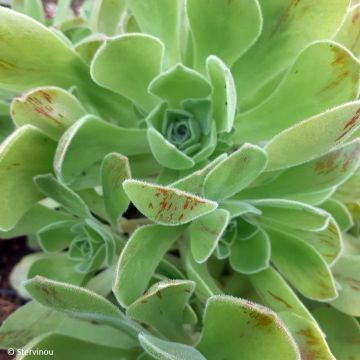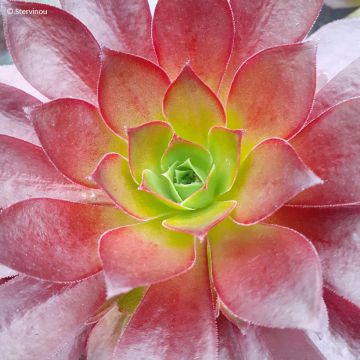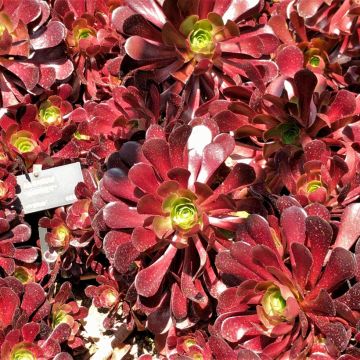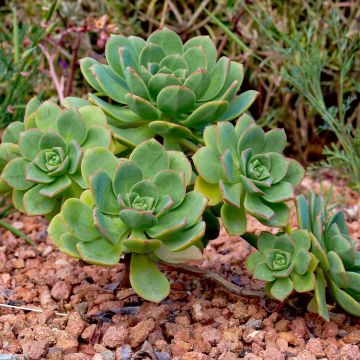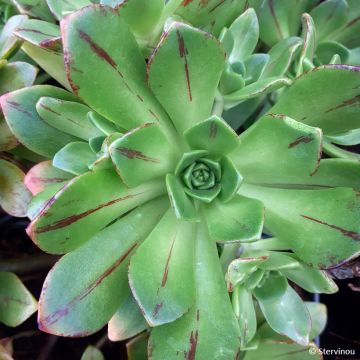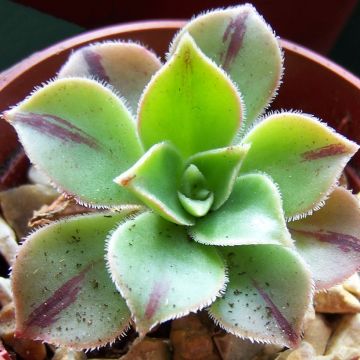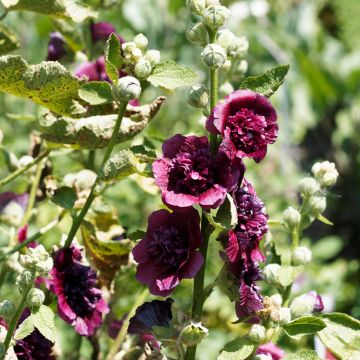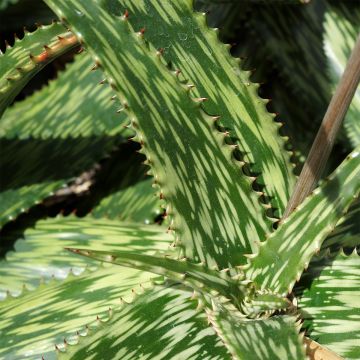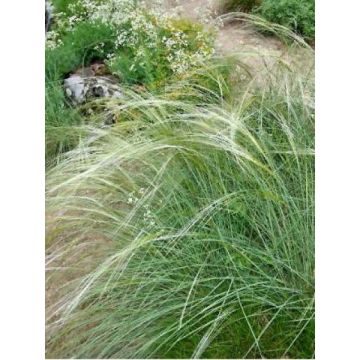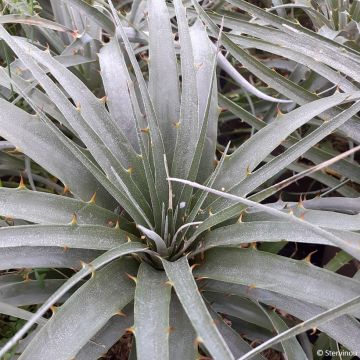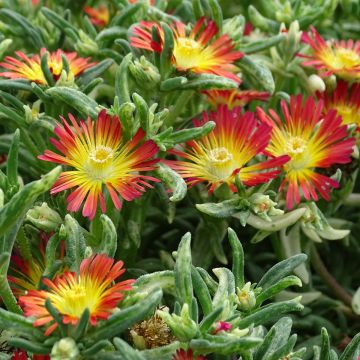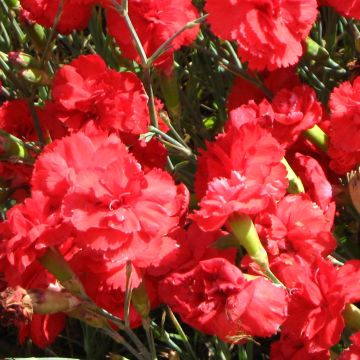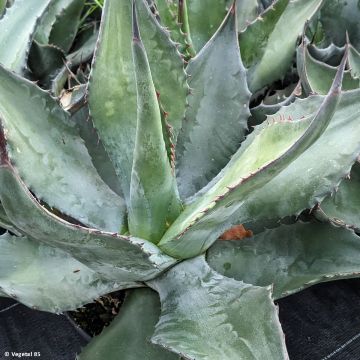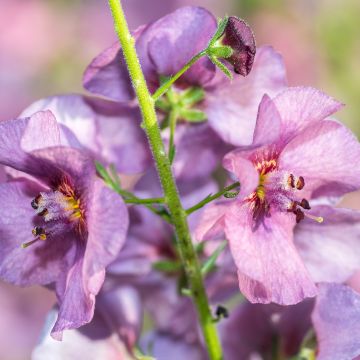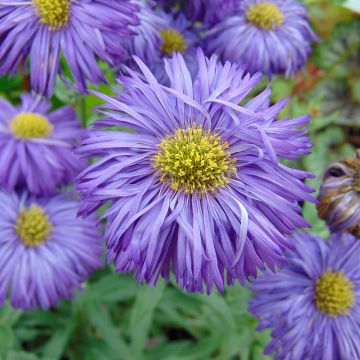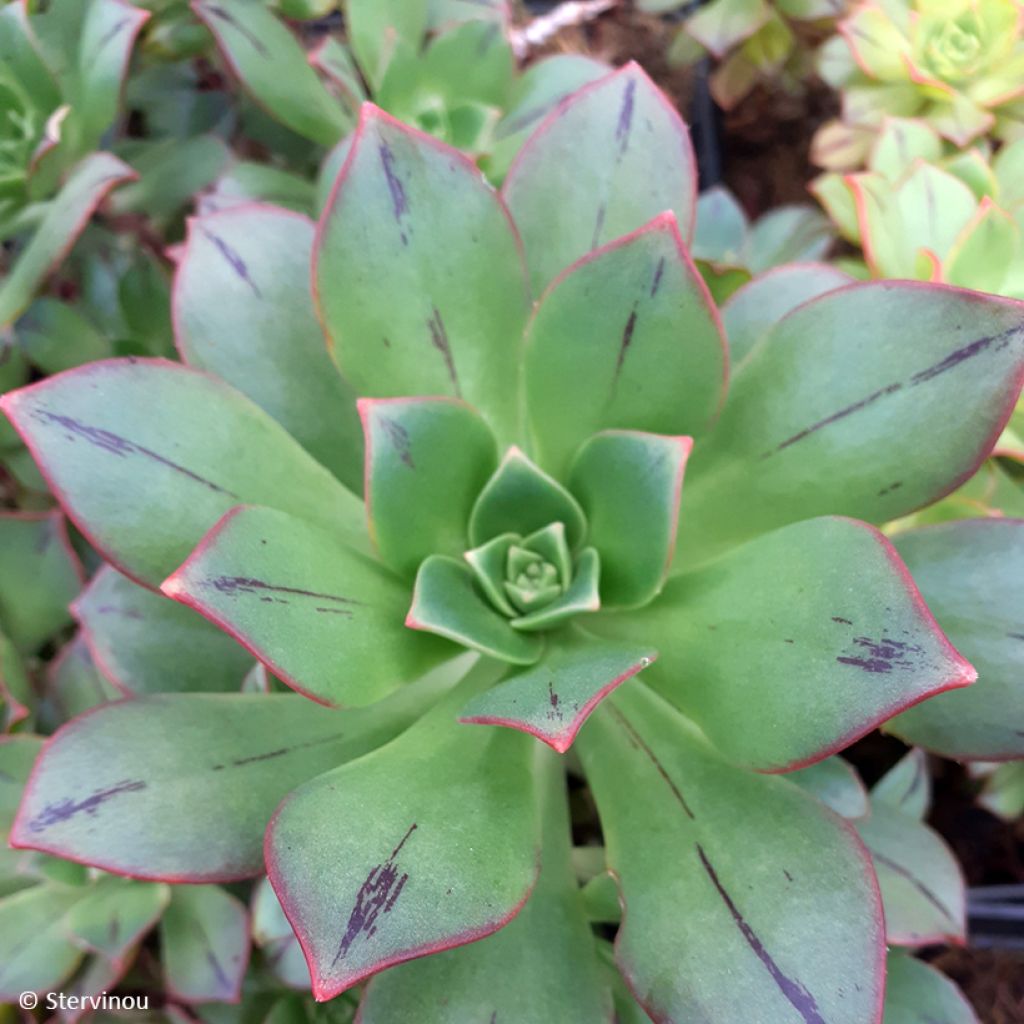

Aeonium Mary Ann Kunkel
Aeonium Mary Ann Kunkel
Aeonium percarneum var. guiaense x mascaense. Mary Ann Kunkel
Tree Aeonium, Tree Houseleek, Irish Rose
This item cannot be shipped to the selected country
Delivery charge from €5.90
More information
Schedule delivery date,
and select date in basket
This plant carries a 12 months recovery warranty
More information
We guarantee the quality of our plants for a full growing cycle, and will replace at our expense any plant that fails to recover under normal climatic and planting conditions.
From €5.90 for pickup delivery and €6.90 for home delivery
Express home delivery from €8.90.
Does this plant fit my garden?
Set up your Plantfit profile →
Description
Aeonium 'Mary Ann Kunkel' is a succulent plant native to the Canary Islands, with a strikingly attractive architectural silhouette. With its very upright habit and short, branched stems ending in rosettes of leaves of various sizes, this perennial eventually resembles a bonsai. Its thick, overlapping leaves have a bright green or slightly bluish colour, often enhanced by a pinkish-purple margin. Only tolerating brief frosts down to -4°C, this Aeonium can only be planted outdoors in very mild climates. Very compact, it can easily be grown in a pot elsewhere, to be sheltered in winter.
Aeoniums belong to the Crassulaceae family, which includes 30 genera and nearly 1400 species. Often small, these plants are particularly well adapted to drought conditions, due to their unique metabolism in the plant kingdom. Many genera therefore thrive in warm regions around the world, like Echeveria, widely found in Mexico and commonly used in mosaic planting. Others are perfectly cold-resistant, such as Sedum (Stonecrop), which embellishes our gardens and is suitable for green roofs. There are 45 Aeonium species, all sharing a family resemblance, especially as some have hybridised with each other.
This is the case with Aeonium 'Mary Ann Kunkel', named in honour of his wife by the German botanist Günther W.H. Kunkel, a specialist in arid zones and a prolific author with 70 books to his name. While the exact parentage of this Aeonium is not known, it is likely the result of a cross between A. percarneum var. guiaense and A. mascaense. The former, native to Gran Canaria, has many branches and is not overly sensitive to humidity. The latter, which seems to have disappeared in the wild, originated from Tenerife and now only exists in cultivation, appreciated for its numerous rosettes that give it an extremely dense appearance.
'Mary Ann Kunkel' has a very unusual very upright habit for this type of plant, forming a highly ornamental cone shape. The fleshy main stems rise almost vertically, branching laterally to produce short shoots. Each is terminated by a rosette of leaves, of varying diameters, giving this hybrid its unique character. Like in other species, the leaves are overlapped in an almost mathematical geometric pattern that adds interest to the plant. The succulent leaves are spatulate. Narrow at the point of insertion, they widen significantly in the upper third, ending in a V-shape at their tips. Their colour is usually a beautiful bright green, but depending on the individuals, season, or climate, they may also display a slight glaucous or greyish aspect. The leaf is often edged with an elegant pink-to-purple margin, enhancing the leaf's architectural design. Additionally, the leaf may bear a dark midrib line during summer, often disappearing in winter. While the foliage is the plant's main attraction, it can also produce a summer flowering with stalks bearing corymbs of small white-yellow star-shaped flowers.
Aeonium 'Mary Ann Kunkel' is particularly appealing for its contemporary look, thanks to its highly sculptural appeal. You can cultivate it in a pot to protect it in winter and decorate your terrace in the warmer months, alongside other orangery plants, such as Calamondin (Citrus madurensis) or Indoor Orange Tree, with its pleasantly fragrant white blooms and tangy fruits appreciated in cooking. In the mildest areas, it will be a standout feature in a well-exposed and sheltered rockery. Plant it in the foreground of a Dasylirion, whose equally striking silhouette will elegantly contrast with it. Place beside it an Aloe 'Safari Sunrise', with its dark green, slender foliage and generous white to salmon-tinged flowering, for a stunning scene.
Report an error about the product description
Flowering
Foliage
Plant habit
Botanical data
Aeonium
percarneum var. guiaense x mascaense.
Mary Ann Kunkel
Crassulaceae
Tree Aeonium, Tree Houseleek, Irish Rose
Mediterranean
Other Aeonium
Planting and care
Aeonium 'Mary Anne Kunkel' is resistant to heat and drought and needs light, well-drained, sandy, poor, even slightly chalky soil. Plant it in spring, after the last frosts, in open ground, in a mild, coastal, or hot and dry climate. It can be grown in pots all year round, sheltered from frost of course. It thrives in the sun (or in partial shade far south), and likes to have its roots warm. Originating from the Canaries, it is sensitive to frost and can only be planted outdoors in very mild climates, where frost is occasional and not intense. Overwinter this plant in an unheated, but frost-free, and very bright location. Water moderately from autumn to spring, and sparingly in summer. Remove faded inflorescences and dead branches.
Planting period
Intended location
Care
This item has not been reviewed yet - be the first to leave a review about it.
Mediterranean perennials
Haven't found what you were looking for?
Hardiness is the lowest winter temperature a plant can endure without suffering serious damage or even dying. However, hardiness is affected by location (a sheltered area, such as a patio), protection (winter cover) and soil type (hardiness is improved by well-drained soil).

Photo Sharing Terms & Conditions
In order to encourage gardeners to interact and share their experiences, Promesse de fleurs offers various media enabling content to be uploaded onto its Site - in particular via the ‘Photo sharing’ module.
The User agrees to refrain from:
- Posting any content that is illegal, prejudicial, insulting, racist, inciteful to hatred, revisionist, contrary to public decency, that infringes on privacy or on the privacy rights of third parties, in particular the publicity rights of persons and goods, intellectual property rights, or the right to privacy.
- Submitting content on behalf of a third party;
- Impersonate the identity of a third party and/or publish any personal information about a third party;
In general, the User undertakes to refrain from any unethical behaviour.
All Content (in particular text, comments, files, images, photos, videos, creative works, etc.), which may be subject to property or intellectual property rights, image or other private rights, shall remain the property of the User, subject to the limited rights granted by the terms of the licence granted by Promesse de fleurs as stated below. Users are at liberty to publish or not to publish such Content on the Site, notably via the ‘Photo Sharing’ facility, and accept that this Content shall be made public and freely accessible, notably on the Internet.
Users further acknowledge, undertake to have ,and guarantee that they hold all necessary rights and permissions to publish such material on the Site, in particular with regard to the legislation in force pertaining to any privacy, property, intellectual property, image, or contractual rights, or rights of any other nature. By publishing such Content on the Site, Users acknowledge accepting full liability as publishers of the Content within the meaning of the law, and grant Promesse de fleurs, free of charge, an inclusive, worldwide licence for the said Content for the entire duration of its publication, including all reproduction, representation, up/downloading, displaying, performing, transmission, and storage rights.
Users also grant permission for their name to be linked to the Content and accept that this link may not always be made available.
By engaging in posting material, Users consent to their Content becoming automatically accessible on the Internet, in particular on other sites and/or blogs and/or web pages of the Promesse de fleurs site, including in particular social pages and the Promesse de fleurs catalogue.
Users may secure the removal of entrusted content free of charge by issuing a simple request via our contact form.
The flowering period indicated on our website applies to countries and regions located in USDA zone 8 (France, the United Kingdom, Ireland, the Netherlands, etc.)
It will vary according to where you live:
- In zones 9 to 10 (Italy, Spain, Greece, etc.), flowering will occur about 2 to 4 weeks earlier.
- In zones 6 to 7 (Germany, Poland, Slovenia, and lower mountainous regions), flowering will be delayed by 2 to 3 weeks.
- In zone 5 (Central Europe, Scandinavia), blooming will be delayed by 3 to 5 weeks.
In temperate climates, pruning of spring-flowering shrubs (forsythia, spireas, etc.) should be done just after flowering.
Pruning of summer-flowering shrubs (Indian Lilac, Perovskia, etc.) can be done in winter or spring.
In cold regions as well as with frost-sensitive plants, avoid pruning too early when severe frosts may still occur.
The planting period indicated on our website applies to countries and regions located in USDA zone 8 (France, United Kingdom, Ireland, Netherlands).
It will vary according to where you live:
- In Mediterranean zones (Marseille, Madrid, Milan, etc.), autumn and winter are the best planting periods.
- In continental zones (Strasbourg, Munich, Vienna, etc.), delay planting by 2 to 3 weeks in spring and bring it forward by 2 to 4 weeks in autumn.
- In mountainous regions (the Alps, Pyrenees, Carpathians, etc.), it is best to plant in late spring (May-June) or late summer (August-September).
The harvesting period indicated on our website applies to countries and regions in USDA zone 8 (France, England, Ireland, the Netherlands).
In colder areas (Scandinavia, Poland, Austria...) fruit and vegetable harvests are likely to be delayed by 3-4 weeks.
In warmer areas (Italy, Spain, Greece, etc.), harvesting will probably take place earlier, depending on weather conditions.
The sowing periods indicated on our website apply to countries and regions within USDA Zone 8 (France, UK, Ireland, Netherlands).
In colder areas (Scandinavia, Poland, Austria...), delay any outdoor sowing by 3-4 weeks, or sow under glass.
In warmer climes (Italy, Spain, Greece, etc.), bring outdoor sowing forward by a few weeks.

































